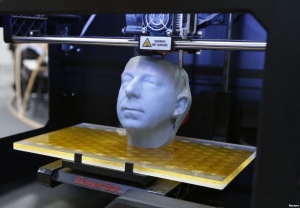Difference between revisions of "3D printing"
| Line 18: | Line 18: | ||
===Concerns=== | ===Concerns=== | ||
| − | + | This complex technology introduces many possibilities in engineering. It has already appeared in several businesses, such as sportswear, but soon, the focus may shift from the inorganic world to organic life. There is also opportunity for misuse of the programmable matter, and issues in regulation concerning intellectual property law and patenting[http://www.atlanticcouncil.org/images/publications/The_Next_Wave_4D_Printing_Programming_the_Material_World.pdf]. | |
Revision as of 02:00, 21 February 2017
Contents
About 3D Printing
History
When did 3D printing start: Evolution from 2D:
Ethics
Looking Towards the Future
4D Printing
4D printing incorporates one more dimension: the function of time. The team dubbed "Self-Assembly Lab"[1] at Massachusetts Institute of Technology collaborated with Stratasys, a major 3D printing manufacturer, and the software corporation Autodesk Inc to develop a custom-built and adaptable technology[2].
As an extension of 3D printing, 4D printing aims to skip the step of assembling the printed material ourselves to having them self-assemble as well as autonomously reshape over time. These programmable materials are created with multi-material 3D printing and their responses to changes in environment (mimicked with simple energy inputs of water, heat, and light), as well as geometric code [3].
Skylar Tibbits, a co-director and founder of Self-Assembly Labs, gave a demonstration of 4D printing at a TED Talk in 2013[4], showing how a single 1D strand dipped in water could proceed to self-fold into the letters 'M I T'.
Concerns
This complex technology introduces many possibilities in engineering. It has already appeared in several businesses, such as sportswear, but soon, the focus may shift from the inorganic world to organic life. There is also opportunity for misuse of the programmable matter, and issues in regulation concerning intellectual property law and patenting[5].
